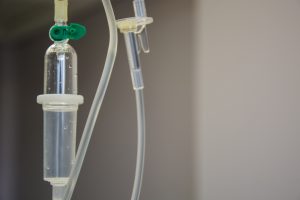According to health surveys, medical errors and malpractices are the third leading causes of death in the United States.
Medical malpractice occurs when a patient is injured due to the doctor’s failure to observe the standard medical procedures when providing treatment. Luckily, most doctors are professionals who rarely find themselves on the wrong side of the law. Still, cases of doctors being involved in legal malpractices occur, and some patients even suffer severe and life-threatening injuries. This can be made worse by a pandemic, like COVID.
When it comes to medical malpractices, it is not just a case of the doctor making an error or the patient’s dissatisfaction with the services. It goes against the law because for a medical injury to occur, the medical provider must have neglected necessary medical procedures, leading to the patient’s suffering. In other words, whether it’s a case of negligence or incompetence, doctors or hospitals should not be the cause of harm to the patients.
The COVID-19 pandemic had hardly hit the global healthcare sector, and many hospitals had to improvise every space available in their facilities to cater to the increasing number of patients. For instance, an article posted on The New York Times highlighted a medical error made by doctors treating a patient with coronavirus complications. Instead of administering heparin [a blood thinner] for a COVID-19 patient, one provider had given the patient vasopressor to increase the blood pressure.
We may be experiencing the coronavirus tidal wave, but the virus is not ending anytime soon. Therefore, doctors and hospitals need to find more effective means of avoiding medical malpractices during the pandemic. This article discusses some of the standard medical practices and how they can avoid facing legal suits due to medical negligence.
Misdiagnosis or Late Diagnosis
Misdiagnosis account for a significant number of medical negligence cases. Misdiagnosis is when a doctor fails to identify the real cause of a patient’s health condition, thus providing the wrong treatment. That may lead to further complications and even death.
One of the effective means of identifying a misdiagnosis is to compare how the treating health provider handled the case to how other professionals in the same field would have treated the patient. If it is determined that another qualified doctor would have correctly diagnosed the condition and provided the proper treatment, the treating doctor is accused of malpractice.
Surgery Errors
A considerable number of medical negligence cases stem from the hospital operating theater. We’ve heard instances of surgeons leaving invasive objects in patients’ bodies, operating the wrong organ, or puncturing internal body parts. Sometimes the nurses attending to the patient may not provide proper post-surgery care leading to further health problems that require surgery that could have been avoided if the surgeon performed the surgery competently.
Medication Errors

In medicine, medication errors can occur when the doctor writes the wrong prescription for a dose or administers a drug wrongly. For instance, if an MD prescribes the wrong medication, the patient’s health will continue to deteriorate. Furthermore, a medication error may occur when the doctor provides a remedy for a misdiagnosed condition. In other situations, some healthcare professionals offer the right medication to the wrong patient.
Anesthetic Errors
The legal implications of anesthetic errors are direr than surgical errors because the patient sustains more severe injuries. Even the slightest mistake when administering an anesthetic may result in permanent brain damage, injuries, or even death.
Childbirth Injuries
Everyone looks forward to a child’s birth because it is a time to be happy and welcome a new life into the world. A professional doctor must ensure the childbirth process goes successfully by anticipating any complication and preventing them before birth. If anything should go awry because of negligence on the doctor’s part, they [physician] can be sued because of medical malpractice. Besides, the improper utility of medical equipment may permanently injure the child.
How Doctors and Hospitals Can Avoid Medical Malpractices During the COVID-19 Pandemic
According to health surveys, medical errors and malpractices are the third leading causes of death in the United States. During the pandemic, the likelihood of more and more doctors making medical errors is greater now more than ever. Medical professionals deal with more emergency cases, affecting the quality of care they provide. Most hospitals now have to change their organizational systems, teams of staff, workload, and schedule, among others.
In the remaining part of this post, we will delve into how healthcare facilities can avoid making errors when handling patients during the coronavirus crisis.
Early Clinical Preparations
One of the most effective ways of alleviating medical malpractices is to provide simulation training, whether in the military, aviation, or civilian surroundings. It helps medical staff learn kinesthetically and the risks, failures, and mistakes in a safe healthcare environment. Furthermore, simulation training helps medical professionals improve their skills and non-technical skills.
Training reduces the risk of skill-fade among the staff, keeping them prepared for medical emergencies at all times. That can help a great deal during a health pandemic, such as coronavirus.
Leverage Technological Tools
Today, many digital tools help medical providers to avoid medical errors. For instance, there are online tools that reduce human errors in doctor data entries. Sometimes these errors may be due to poor systems design that further drive human error. Fortunately, there are software available in the market that can make data entry efficient.
During this coronavirus pandemic, it is critical to observe social distancing. Healthcare professionals should ensure that they provide quality services while adhering to healthcare regulations. In this case, hospitals can take advantage of e-signature applications to allow patients and patients’ relatives to sign documents virtually. That offers convenience and lowers operational costs for the doctors.
Assertive Followership
While most medical systems advocate for a system-based approach, it is critical to integrate all human factors to ensure that medical errors are kept low. That calls for medical staff to challenge their superiors by asking questions about the various procedures, airing their concerns, and speaking about any vulnerabilities that may lurk in the hospital environment. Assertive followership is a critical element that boosts learning while reducing medical errors.
However, for strong followership to be effective, healthcare facilities must ensure that everyone involved is on board and understands what needs to be done. Those in authority should “stoop” a little to flatten the gap and encourage collaboration.


Join the conversation!